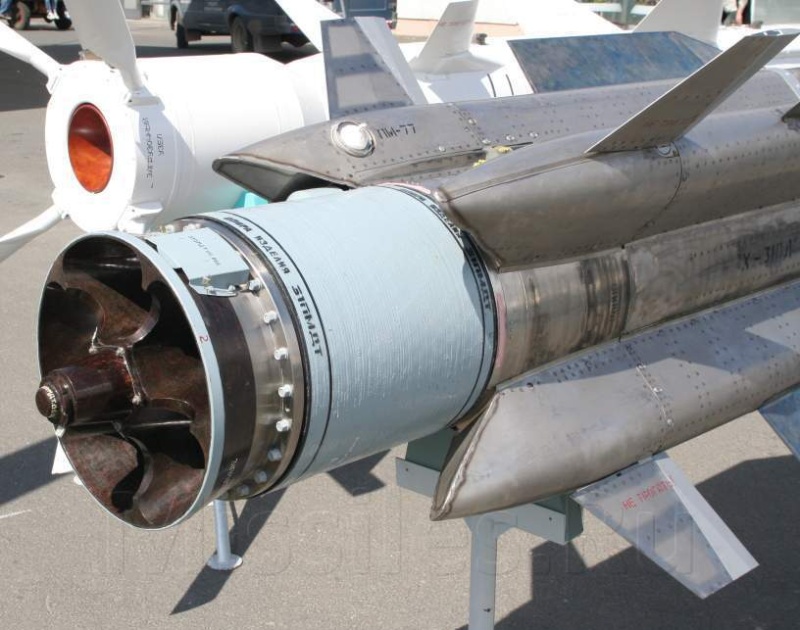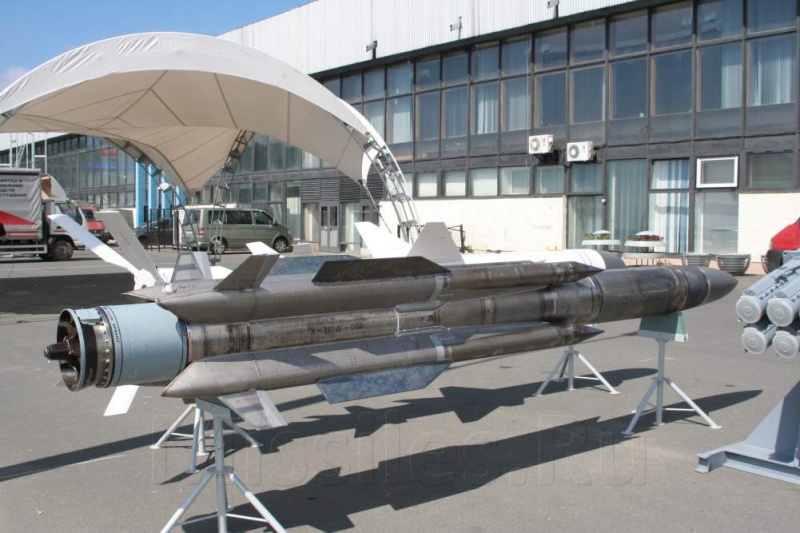If Russians actually managed to integrate Kh-31 missile with Ka-52 helicopter, than I think it could use both versions of Kh-31, anti-ship and anti-radar version.ESM suite in Ka-52 is in my opinion advanced enough that it could be used for anti-radar missile.
Certainly the anti radiation version should be easy to integrate as enemy radar emissions should be detectable I certainly agree with that.
Maybe they only need to modify radar in Ka-52 nose, that it could be used in anti-ship role.
For use against smaller enemy vessels that might be a threat to the Mistral platform I suspect a Ka-31 with Ka-52 combination might be more potent.
Ka-50 could use Kh-25 ASM, so Ka-52 for sure could use it also and if Ka-52 could have such heavy missile as Kh-31, than Kh-29 could also be integrated on Ka-52.
The Kh-38 is supposed to be the replacement for both the Kh-25 and Kh-29 with a range of 40km and a reasonable payload and a choice of terminal seekers. It is double the weight of a Kh-25 but then with 4 weapon pylons carrying 4 lighter weapons with shorter range or 4 heavier weapons with much longer range and heavier payloads I think the choice is clear.
They want to launch their YJ-93's (Kh-31 copy) from submarines and hit things over the horizon their reconnaissance might see and target. Launching them from submarines they will likely have bigger solid fuel stage for more range.
The missiles sold to China were older model Kh-31s and new models with double the range in both the anti ship and anti radar models are now available.
A bigger solid fuel rocket will accelerate the missile to a slightly higher speed initially and perhaps allow it to gain more altitude which would improve range, but adding more fuel to the ramjet sustainer would be much more efficient in extending range.
The newer model Kh-31s are slightly heavier but have double the range.
Think in terms of a cruise missile with a kerosene powered jet engine that needs a solid fuel engine to get moving.
The purpose of the solid fuel rocket is to start it moving... on the ground there is too much drag for its jet engine to get it moving and at zero speed its wings give no lift to help it.
The solid rocket only burns for a few seconds... making it twice the size will increase its speed but will not greatly increase performance except in some cases.
Once the solid fuelled rocket has lifted the missile off the ground it falls away and the large solid fuelled rocket down the centre of the missile ignites and accelerates the missile to a higher speed and altitude to where the ramjet engine can be started. The solid rocket engines burn for less than 15 seconds while the ramjet engine burns for minutes. Adding fuel to the ramjet is a more efficient way to increase range... in the same way that a solid rocket booster to get a heavy transport aircraft airborne from a short strip makes sense, but to double the rocket boosters to try to extend the flight range of the transport aircraft does not make sense. It makes more sense to slightly increase the rocket boosters and use that extra energy to add more fuel to the transport to extend its flight range once airborne.
The SA-19 uses a small slim low drag missile that is launched by a booster. The original booster accelerated the SA-19 to 1,000m/s and then falls away and a small very low power rocket motor on the SA-19 starts up to reduce drag and maintain speed to the target area.
It has a range of about 8-12km depending on the model. The Pantsir-S1 has a larger more powerful rocket motor that accelerates the missile to 1.3km/s which doubles the range of the low drag missile to 20km.
The difference here is that the Kh-31 is not a low drag design rocket and derives most of its range from its ramjet engine. The purpose of the solid fuelled rocket is not to get the Kh-31 to the target, it is to accelerate the weapon to a speed where its ramjet engine can be started from stationary (helos) or slow moving targets (aircraft) operating at relatively low altitude.
Likely before it gets close enough to the ship for SeaRam to shoot at it, explosive charge in warhead "shotgun" fires many many depleted uranium rounds, they continue with extreme speed and rattle tin can ship with holes.
SEA RAM would probably start engaging at 9km which is too far for a shotgun warhead to be effective.
I see that the Russian navy is ready to introduce the naval version of Pantsir-S1 to their new ships and ships for export, so that means 20km range missiles... in fact the news report is here:
The Russian Navy will soon receive a new ship-based gun/missile air defense system, KBP Instrument Design Bureau, the developer of the system, said on Monday.
The system, dubbed Pantsyr-M, has been developed on the basis of the land-based Pantsyr-S1 (SA-22 Greyhound).
"Pantsyr-M will replace the Kortik air defense systems and will be installed on all new classes of Russian combat ships, from corvettes to cruisers," said Alexander Zhukov, a senior KBP official.
Zhukov cited specifications for an export version of Pantsyr-M as the data on the system for the Russian Navy is still classified.
The export Pantsyr-ME version has a response time of 3-5 seconds and can track and destroy simultaneously up to four targets.
Its missiles have a range of 20 kilometers and can hit targets at altitudes from 2 meters to 15 kilometers, while its guns have a range of four kilometers and can hit targets at altitudes up to 3 kilometres.
source: http://en.rian.ru/mlitary_news/20110718/165263833.html
Response time is impressive and the ability to take on 4 targets at once is also impressive with the range of 20km and altitude from 2m to 15km makes it a very potent system for small vessels, while for larger vessels it will be even more useful with multiple turrets managed and coordinated with larger longer range systems (radar and missiles).






